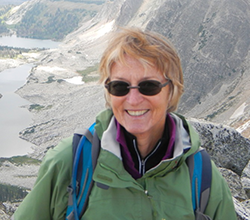Diane Renshaw, whose intimacy with Tassajara began in 1978, has known the valley and surrounding wilderness through her practice of Zen and as a professional ecologist. Involved in an ongoing wild plant project at Tassajara, she both nurtures and is nurtured by the land. She also clearly enjoys a vital exchange of ideas and insights with both her retreat participants and her co-leaders of the much anticipated annual retreat, Wildflowers and Birds of Tassajara. Together with Gloria Lee and Judith Randall, Diane offers the retreat again this year on May 8 – 12 (Thursday – Monday). Here is an intriguing taste of what those days may bring.
Would you tell us a little about your retreat?
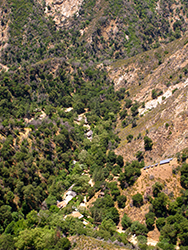 Tassajara Zen Mountain Center is set in a serene creekside area, surrounded by a rugged and spectacular wilderness that is typically only glimpsed from the road on the drive in. On this retreat we make forays into this surrounding landscape to visit a variety of habitats that you don’t find right around the Tassajara center. This is the 19th year we have offered this retreat, yet each year is different and I never know exactly what we will find!
Tassajara Zen Mountain Center is set in a serene creekside area, surrounded by a rugged and spectacular wilderness that is typically only glimpsed from the road on the drive in. On this retreat we make forays into this surrounding landscape to visit a variety of habitats that you don’t find right around the Tassajara center. This is the 19th year we have offered this retreat, yet each year is different and I never know exactly what we will find!
Sometimes we have expert botanists and birdwatchers sign up for the retreat. That’s a treat for me—an opportunity to see how they view Tassajara through the lens of their particular expertise. Many retreatants describe themselves as “beginners,” but often they are the ones who have the most astute observations and ask the absolute best questions that open up whole new worlds of seeing and appreciation. We all end up learning from each other, and there is a sense of intimacy that develops in the group as a consequence.
On one evening, we set up a small telescope and look at the stars, moon, planets, nebulae, satellites—whatever we can find. Other guests and resident students are invited to join us. Once a guest, an astronomer from NASA, showed up with his telescopes! That was a treat for everyone.
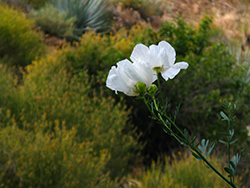 For me, a real highlight is collaborating with my co-leaders, Judith and Gloria. Between them they have many years of Zen practice and a deep familiarity with Tassajara. I can always count on them to nudge me towards some wonderful insight or understanding. Each year they select for the group a short text that has a basis in Zen or Buddhist teachings. We set aside time for a discussion or dharma talk on this reading and consider its relevance during our outdoor time as well.
For me, a real highlight is collaborating with my co-leaders, Judith and Gloria. Between them they have many years of Zen practice and a deep familiarity with Tassajara. I can always count on them to nudge me towards some wonderful insight or understanding. Each year they select for the group a short text that has a basis in Zen or Buddhist teachings. We set aside time for a discussion or dharma talk on this reading and consider its relevance during our outdoor time as well.
Gloria, a former Zen Center chef, looks forward to the imaginative, varied, and tasty bag lunches and Tassajara dinners. One spring the kitchen served us a huge salad of native miner’s lettuce, celebrating the lush regrowth that followed the 2008 Basin Complex Fire.
How did you come to be interested in this subject?
I cannot remember a time when I was not interested in the natural world. Growing up I was fortunate to have the freedom and opportunity to spend hours and hours simply poking around outdoors. Judith says of her bird watching that she is especially interested in watching a bird’s behavior in this setting, on this day. That puts it so eloquently! Always fresh, capturing the essential.
How has nature influenced and shaped your spiritual practice?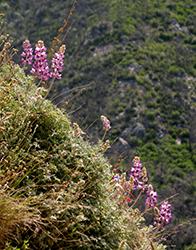
Nature is at the heart of my spiritual practice. Judith points out that Dogen’s Mountain and Waters Sutra shows us that mountains and rivers, grasses, rocks, tiles, pebbles (and birds and wildflowers) all teach the dharma just by being completely themselves; no words are needed. You can’t comprehend this by thinking about it, but I think you can get close in that moment when you really see a Scrub Jay in all its wonderful birdness or get completely absorbed in looking at a bright yellow lichen on a sandstone boulder. That’s my understanding, at least right at this moment.
What are some of the insights and observations that you have observed your retreatants come away with?
We spend lots of our time outdoors and give ourselves the gift of slowing down enough to begin becoming aware of everything around us, something most of us don’t make time for. Our schedule includes time for relaxing and visiting the baths, a pleasant contrast to the excitement and sensory stimulation of being dazzled by masses of wildflowers, the flash of a bright orange oriole in the upper garden, or the thrill of watching tiny wrens busy bringing tasty insects to their nestlings.
Sometimes we get carried away with chatter and buzz. Gloria introduced the practice of using the mindfulness bell: we bring our activity to a stop, take a few breaths, and let the colors, smells, breeze, birdsong, wilderness rush in to fill the silence. This simple experience is mentioned as a high point more often than any other aspect of the retreat.
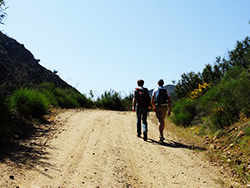 We hope that everyone in the retreat has the awakening moment of seeing something with new eyes, either something they have never seen before or a fresh perspective on something that is old and familiar. Seeing for the first time a bright red and yellow western tanager in a green pine against a brilliant blue sky, a guest told me, “I feel like I am watching a brush painting come to life.”
We hope that everyone in the retreat has the awakening moment of seeing something with new eyes, either something they have never seen before or a fresh perspective on something that is old and familiar. Seeing for the first time a bright red and yellow western tanager in a green pine against a brilliant blue sky, a guest told me, “I feel like I am watching a brush painting come to life.”
What do you hope your retreatants will come away with after attending your retreat?
Judith sums this up nicely, for retreatants and retreat leaders as well: we should be deeply rested, awakened to the amazing, infinite, vitality of the natural world, and to our own inner being. That is something to savor and share.
I can guarantee that everyone will learn something about the local wildflowers, birds, and the ecosystem processes that connect them all. Scientific names will be spoken, but there is no final quiz!
I can’t wait to see what new discoveries await us this year.
Wildflowers and Birds of Tassajara with Diane Renshaw, Myo-on Gloria Lee and Daiyu Judith Randall, May 8-12 (Thursday-Monday). Experience the glory of Spring in the wilderness landscape surrounding Tassajara.
(photos by David Silva and Shundo David Haye)


